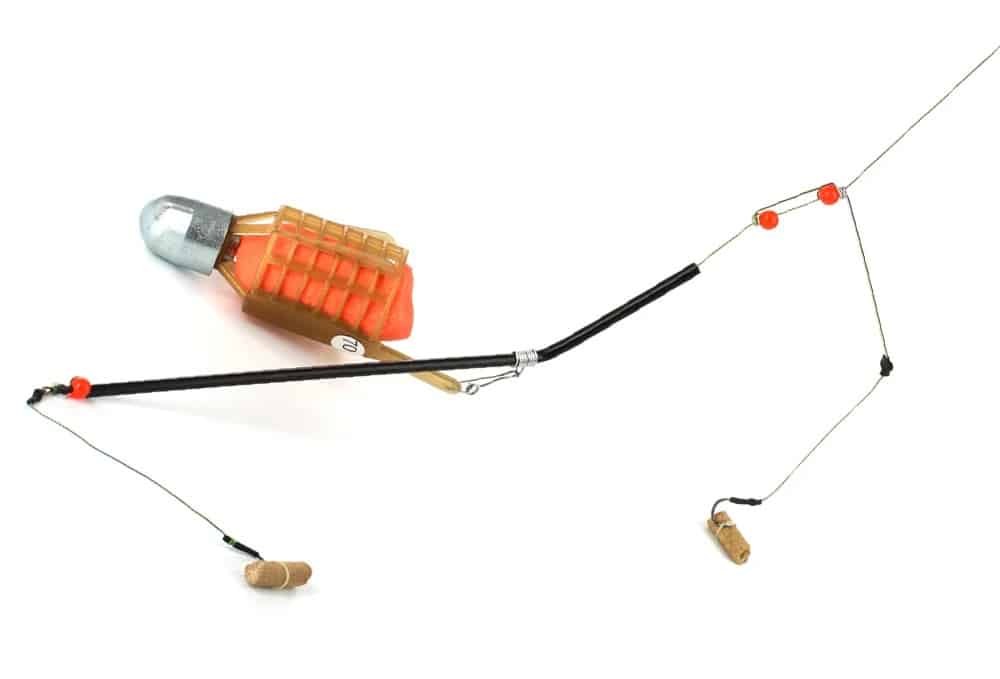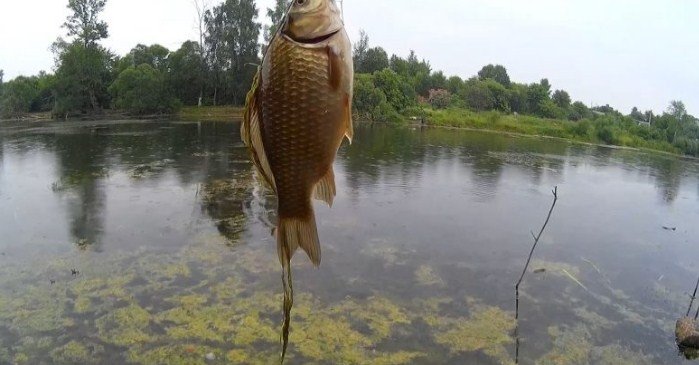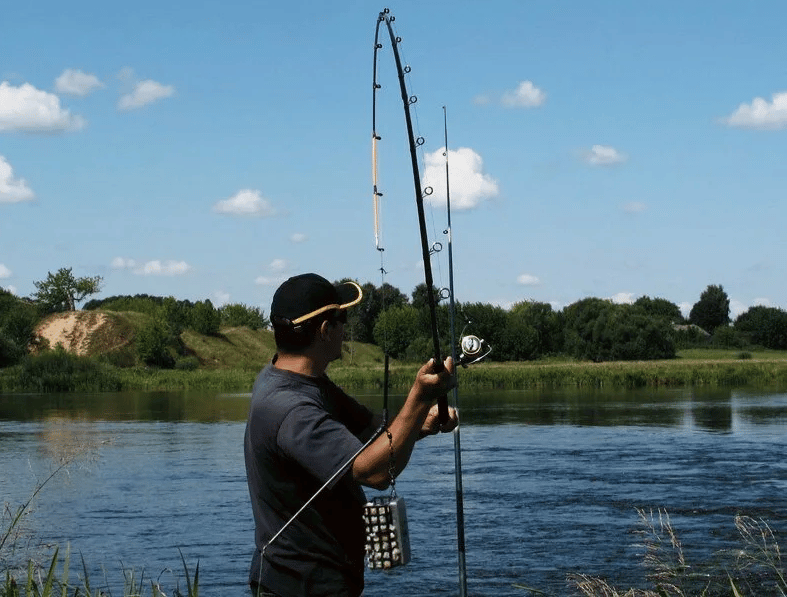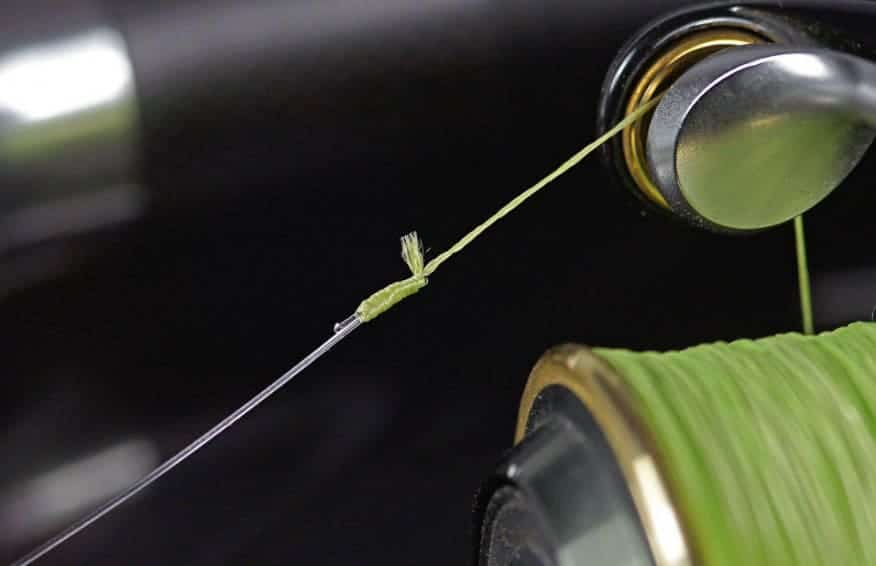A feature of the
feeder tackle is the presence of a
feeder located next to the hook. The food in it attracts more fish, so the chances of catching large specimens increase. Typically, the tackle is reset every 10-30 minutes. Thus, in the process of fishing, the fisherman is constantly in an active state. Fishing takes place at considerable distances, which sometimes can exceed a hundred meters.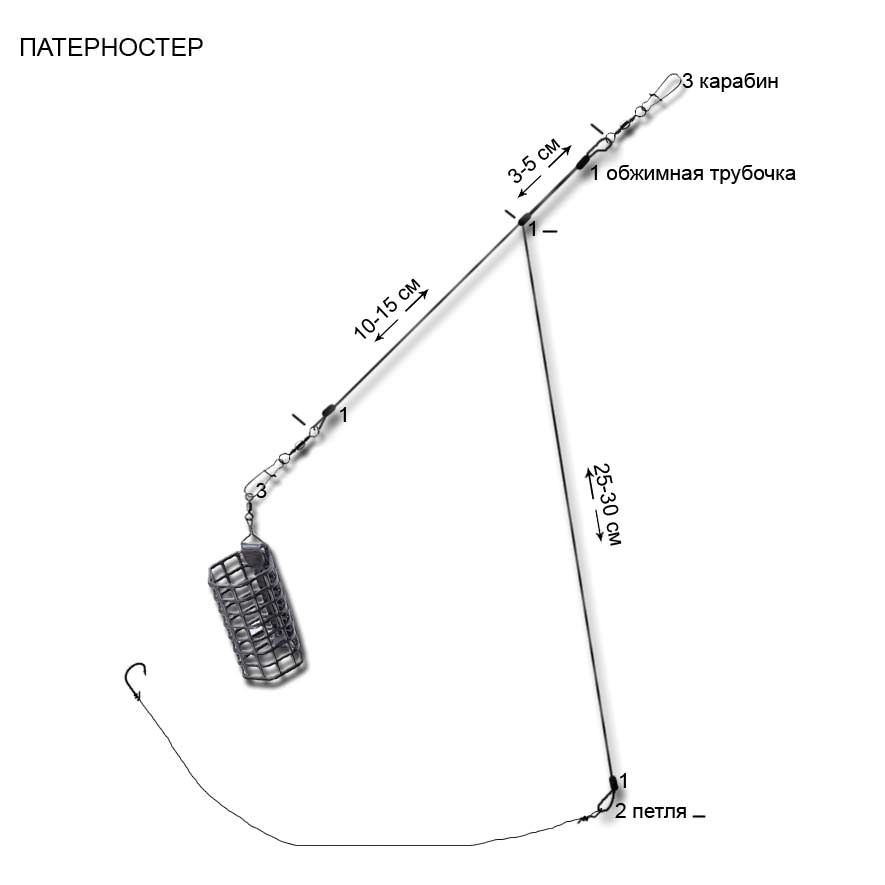
- Why special feeder installations are needed on a lake, pond or reservoir
- Features of feeder fishing in ponds without flow
- General requirements
- The best installations for ponds without flow
- For the muddy bottom
- Installation for shallow lakes
- Reservoir fishing
- Self-Locking Feeder Mount for Non-Current Ponds
- Standing water feeder tackle
- The most sensitive feeder installation for standing water
- What tackle is needed for fishing on the lake
- Catching with a feeder in a pond without flow
- Поделиться ссылкой:
Why special feeder installations are needed on a lake, pond or reservoir
When fishing in reservoirs where there is no current, the food contained in the traps is not washed out by the current. Therefore, the fisherman must figure out how to solve this problem. In general, in order for the catch to be successful, it must follow the classical rules. The fisherman must make a preliminary measurement of the bottom, carry out the starting feed and only after that start casting.
Features of feeder fishing in ponds without flow
In the presence of a current, the size of the feeders is selected depending on the strength of the stream, but in stagnant water this way it will not be possible to choose a suitable feeder. Lighter feeders and delicate gear are usually taken here. The main factor affecting the size of the feed is the casting distance. The larger it is, the heavier the tackle should be.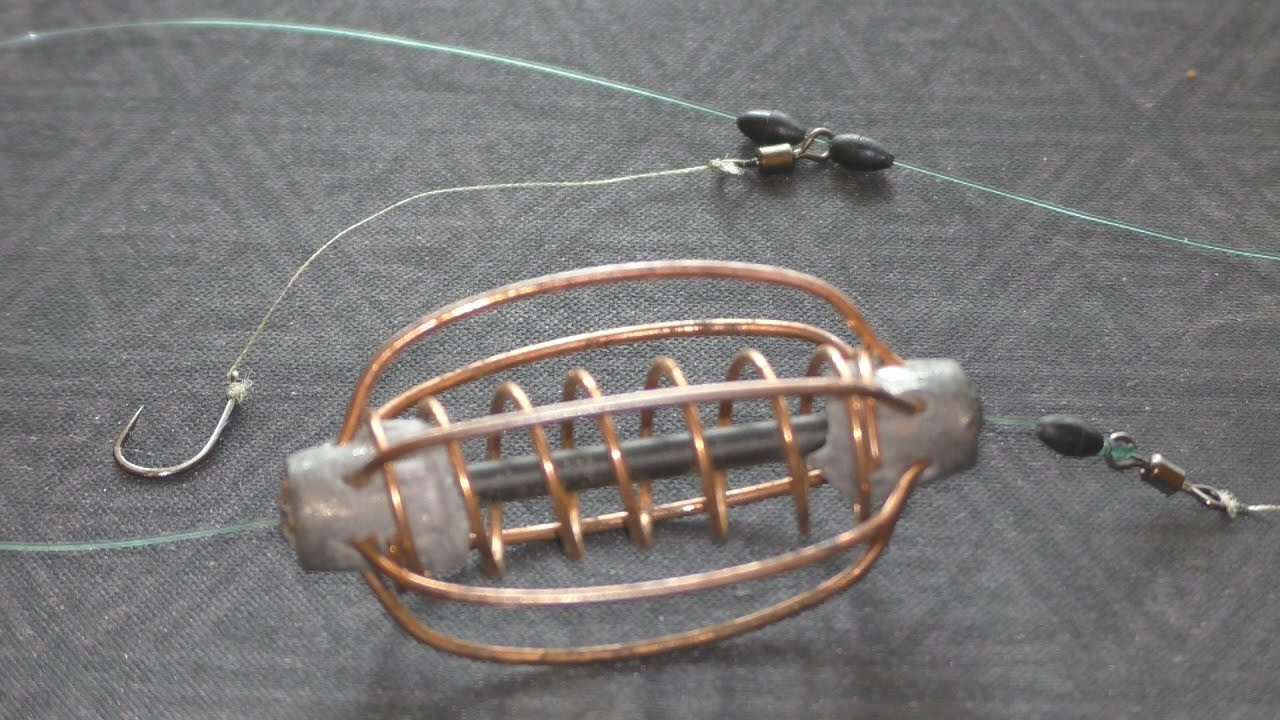
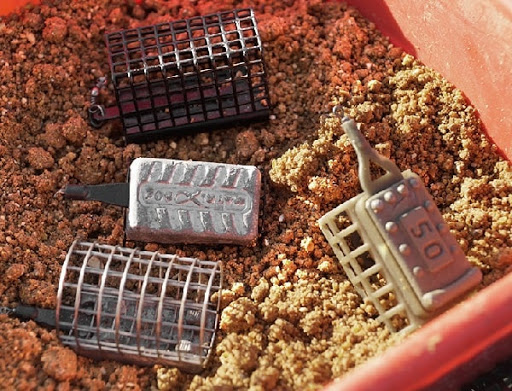
General requirements
When creating a standing water feeder rig, consider the following:
- Light troughs are preferred . For medium-range casts, you can use feeds weighing 30-50 grams. If the range exceeds 80 m, then heavier feeders will also be effective. At distances less than 40 m, those weighing 15-30 grams are suitable.
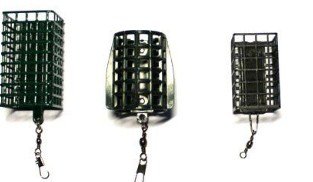
- Use the softest and most sensitive tips for your fishing rods .
- The length of the leash for the feeder in standing water should be from 80 cm to one and a half meters. It should be remembered that fish bite more carefully in stagnant water than in current. In the latter case, she has to quickly decide to grab the bait. In the lake, she can make a few hesitant attempts before that.
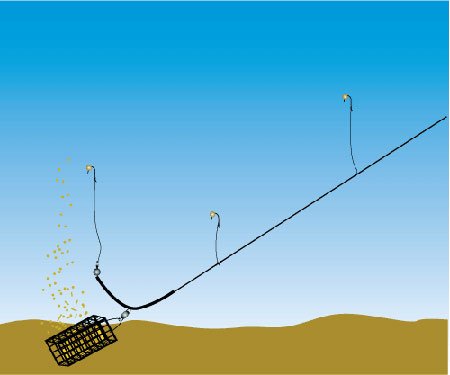
The best installations for ponds without flow
There are many types of feeder rigs. Each of them has its own characteristics, making it more convenient to use in certain circumstances. Knowing the pros and cons of various options, a fisherman in a particular situation will be able to choose the most suitable option for
feeder mounting .
For the muddy bottom
In a situation where the pond has a muddy bottom, it is convenient to use a running rig.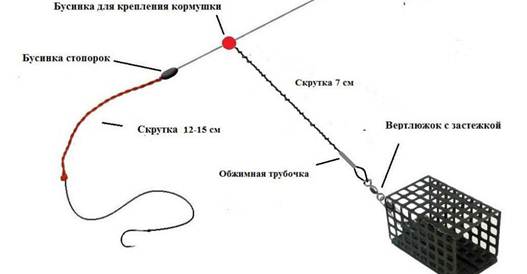
- The feeder is located on a 7-10 cm long fluorocarbon bend.
- The branch is mounted on a swivel that can slide freely along the main line. To limit its movement, a stopper is used, which is located on the main line closer to the leash.
When lowering to the muddy bottom, the feeder can sink deep into it, and the leash with the bait and hook will remain in the water.
Installation for shallow lakes
For shallow water fishing, you can use the symmetrical loop rig. Thus, medium-sized fish are well caught, which actively move in different layers of water. An additional advantage is that this rig is self-locking.
- A fluorocarbon cord is attached to the main line. This can be done with a small eyelet and a swivel.
- The other end of the thread is folded in half. Put on the swivel so that it is inside the loop. The tip is tied so that a large loop is formed.
- At the very end, make a loop with a length of 2-3 cm to attach the leash and secure it with a knot.
- At the end to which the leash will be attached, a 10 cm long twist is created.
- The rest of the loop can be 8-40 cm long.
- A leash is attached to the loop. The other end of the fluorocarbon line is attached to the main line.
The size of the loop will be the larger, the more cautious fish you plan to fish.
Reservoir fishing
The most promising places for fishing are former riverbeds and depth drops. The distance to the nearest edge can be very far from the shore. Therefore, it sometimes makes sense to fish from a boat. On such reservoirs, the classic feeder installations, as well as the use of the rigging method, have proven their effectiveness. For long casts, heavy rigs are used. As a fishing line, it is convenient to use a thin braid and thin leashes using a feedergam.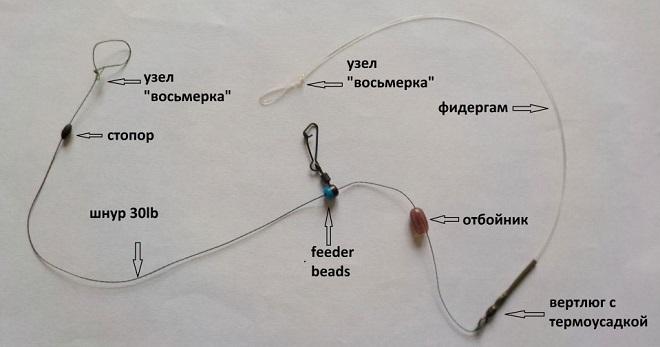
Self-Locking Feeder Mount for Non-Current Ponds
Self-chopping occurs due to the influence of the weight of the feeder. The fish eats the food and swallows the hook unnoticed. Under the influence of the weight of the feeder, undercutting occurs. In this case, the only thing left for the fisherman is to fish out and place it in the landing net. In this case, even if the quivertip is triggered with a delay, the fisherman will not lose the catch. As one of the options for self-undercutting installation, we can give an example of fishing using the flat method.
Standing water feeder tackle
In order to make a catchy rig, the fisherman must choose all its elements correctly. For feeder fishing, the rod must have a quiver tip. It is a flexible, small rod tip that always responds quickly to a bite.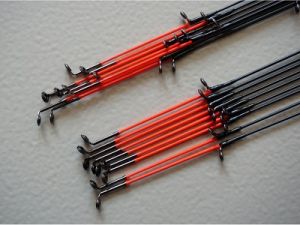
. It is convenient to take a braided line or strong monofilament fishing line. Since the feeder line is relatively heavy, it is important that the main line has sufficient tensile strength and has little stretch. It is believed that the thickness of the
braidshould not be thinner than 0.12 – 0.16 mm.
- It can be fluorocarbon . This material combines high strength and low visibility to fish.
- Low stretch special feeder line can be used.
- A braid is sometimes used for a leash.
The length of the leash depends on the type of fish and fishing conditions. In stagnant water, it can reach 60-100 cm, and in some cases 160 cm. The presence of a long leash in some cases helps to lull the vigilance of the fish.
It is allowed to use hooks of various sizes. When choosing them, the type of fish and the size of the nozzle are taken into account. In feeder rigs, smaller hooks are often used. In classic equipment, hooks with a size of 12-18 are suitable. When fishing for crucian carp and bream, colored hooks can sometimes be effective. A darker color will be preferable for carp, grass carp and some large fish. Teflon-coated or nickel-coated are suitable for this purpose. For feeder fishing, the sharpness of the hook is of great importance. So that they always have the desired sharpness, you need to change them after catching 2-3 fish. In some cases, the replacement is best done after each fish.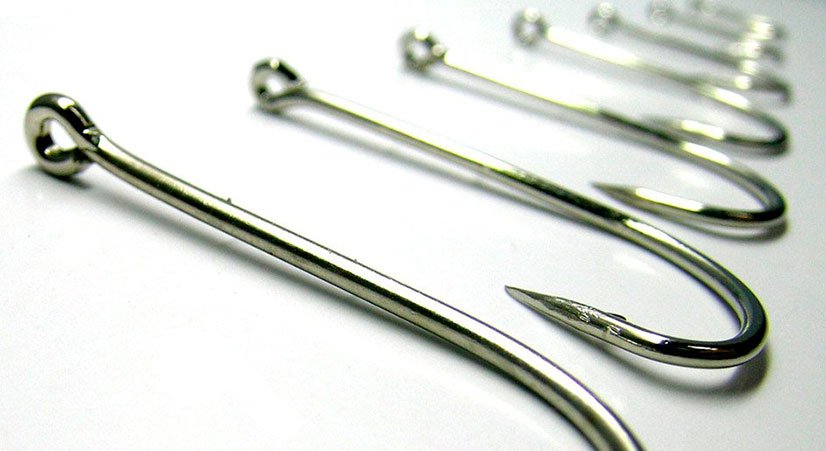

The most sensitive feeder installation for standing water
The Gardner rig is known for its high bite sensitivity. Therefore, it is often used by both experienced craftsmen and beginners.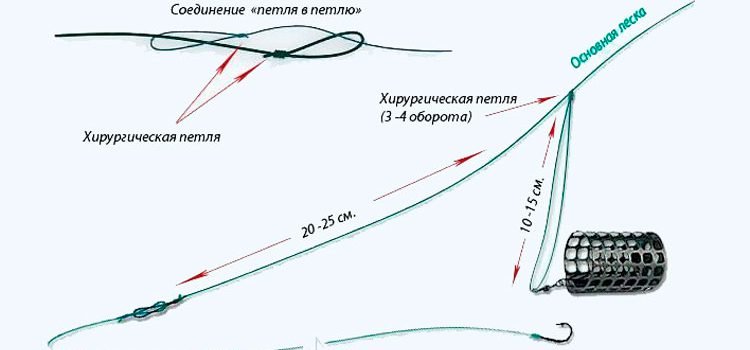
- It has a high sensitivity when fishing in waters where there is no current.
- It can be used in areas with any type of bottom.
- If the tackle gets tangled, the feeder will break off, and the fish will remain on the hook. For the next cast, it will be enough to attach a new feeder.
- This tackle is easy to make, even for beginners.
- The feeder can be attached to the loop on the main line.
An important advantage of the Gardner loop is that such a tackle does not get tangled when casting. When creating, it is recommended to use feeders that are attached with a swivel. This is to prevent twisting when playing. To create such a feeder wiring, the following steps are required:
- On the main line, you need to choose an area that has a length of 50-60 cm.
- A swivel is passed inside it to attach the feeder.
- The ends are folded together to form a loop. She is fixed with a knot.
- A feeder is put on the swivel clasp.
- At the free end of the main line, a loop is made to connect the leash. The distance between the two loops should be such that the feeder does not reach 2-3 cm to the end of the line.
- Attach a leash with a hook and bait.

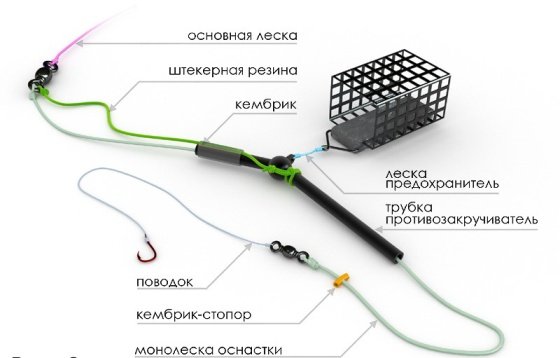
[/ caption]
What tackle is needed for fishing on the lake
For the feeder, you need to choose the right material for the main line. At short distances, a monofile is suitable for this. It is advisable to use exactly the type that is intended for the feeder. Such a line is more rigid, practically has no memory and has a high wear resistance. The most convenient will be a thread with a diameter of 0.25-0.3 mm. However, this tackle is more difficult to use for long casts due to its elasticity. This is due to the use of heavier feeders in such situations. Therefore, for medium and long casts, it is preferable to use a thin braid with a diameter of 0.1-0.12 mm. In this case, lighter feeders can be thrown over a longer range. The required degree of elasticity in such cases is ensured by using a monofilament shock leader.
Catching with a feeder in a pond without flow
When fishing in reservoirs where there is no current, the composition of the tackle depends on the casting distance and the characteristics of fishing. The casting range can exceed 100 m and sometimes reaches 160 m. The heavier the tackle, the longer the casting can be done. At short distances, not exceeding 40-50 m, you can use a rigid monofilament line with relatively light feeders. For longer casts, they work with braids and feeders weighing over 50 grams. Lake Feeder Fishing – Feeder Fishing Video Report 2021: https://youtu.be/muw4paZXkO0 Using feeder rigs to fish in water without flow is an effective fishing method. The choice of a suitable mounting depends on the specific fishing conditions. Sometimes, to find the best way, you have to try several options to determine the most promising one.In order to ensure that you get a good catch, you must follow all the rules for fishing with a feeder. In particular, it is important to find a catchy spot, make preliminary complementary foods and carefully control bites.
